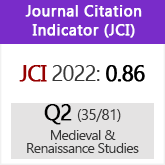Fiscalidad mudéjar en el reino de Granada: las rentas del Quempe
DOI:
https://doi.org/10.3989/aem.1992.v22.1092Abstract
The tax system during the Mudejar period which is, mostly, the reflection of the nazari’s, was nevertheless more complex and heterogeneous and presented important divergences according to the different nooks of the realm of Granada where it was applied In this study, we analyze, from a general point of view, the tributary system towards the end of the XVth century, but we are conscious of the fact that, even at that moment, immediately after the conquest, important modifications had already been introduced. It is through the analysis of a concrete example, that of Quempe, that we will be able to observe narrowly this diversity. Quempe is an old district, whose Birth dates, at least, from the XIth century, located between Vega and the valley of Lecrin. The study of its fiscal regime will enable us to determine better the economic wealth, mainly based on breeding and saltworks exploitations. The fact of transferring this territory first to Muley Hacen and Aben Comixa and later, after the death of the latter, to the Granada San Jeronimo monastery, demonstrated clearly the policy of the Castilian crown in the reign of Granada.
Downloads
Download data is not yet available.
Downloads
Published
1992-12-30
How to Cite
Trillo San José, C. (1992). Fiscalidad mudéjar en el reino de Granada: las rentas del Quempe. Anuario De Estudios Medievales, 22(1), 853–878. https://doi.org/10.3989/aem.1992.v22.1092
Issue
Section
Monographies
License
Copyright (c) 2020 Consejo Superior de Investigaciones Científicas (CSIC)

This work is licensed under a Creative Commons Attribution 4.0 International License.
© CSIC. Manuscripts published in both the printed and online versions of this Journal are the property of Consejo Superior de Investigaciones Científicas, and quoting this source is a requirement for any partial or full reproduction.All contents of this electronic edition, except where otherwise noted, are distributed under a “Creative Commons Attribution 4.0 International” (CC BY 4.0) License. You may read here the basic information and the legal text of the license. The indication of the CC BY 4.0 License must be expressly stated in this way when necessary.
Self-archiving in repositories, personal webpages or similar, of any version other than the published by the Editor, is not allowed.














